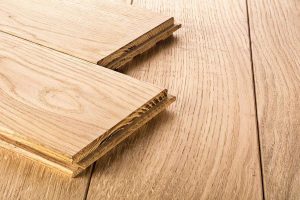Engineered Hickory flooring is a modern alternative to traditional solid hardwood that offers excellent durability and adaptability. But how is it actually made? The process involves combining multiple layers of wood under high pressure to create a strong, stable flooring material that retains the beauty of hickory while improving performance. Understanding how engineered hickory flooring is made helps in evaluating its quality and long-term benefits.Why it is worth choosing

Core Structure and Material Selection
The creation of engineered hickory flooring begins with careful material selection. Each layer in the flooring plank has a specific role in strength, flexibility, and appearance.
Top Veneer Layer
The top layer, also known as the wear layer, is a thin slice of real hickory hardwood. This is what gives the flooring its classic appearance, including its rich grain and variation in tone. The thickness of this layer can range from 0.6 mm to over 4 mm, depending on quality and price point.
Core and Base Layers
Beneath the hickory veneer are several layers of high-quality plywood or high-density fiberboard (HDF). These layers are cross-laminated, meaning each is laid perpendicular to the one below. This crisscrossing design minimizes expansion and contraction due to humidity and temperature changes, giving engineered flooring its well-known stability.
Manufacturing Process
The process of producing engineered hickory flooring requires precision machinery and controlled environmental conditions. This ensures the flooring remains consistent in quality and appearance across every plank.
Bonding and Pressing
The top hickory layer is bonded to the core layers using strong adhesives that are heat and moisture resistant. The entire plank is then pressed under high pressure using a hot press or cold press system. This step fuses the layers into a solid, stable unit capable of withstanding everyday foot traffic and seasonal changes.
Conditioning and Curing
Once bonded, the planks go through a conditioning phase to allow adhesives to cure completely. This helps prevent delamination or warping during use. Curing times and methods can vary depending on the adhesives used and the manufacturer’s technology.
Finishing and Surface Treatments
After the planks are formed, they move on to the finishing stage. This part of the process enhances durability and adds aesthetic value.
Sanding and Texture
The planks are sanded smooth or given a specific texture, such as wire-brushing or hand-scraping, to match design trends. Surface texture also plays a role in hiding minor scratches and adding slip resistance.
Staining and Sealing
Hickory’s natural variation is beautiful on its own, but many manufacturers offer stains in shades like gray, espresso, or honey to suit different interior styles. A topcoat of polyurethane or UV-cured acrylic is applied to protect the surface from wear, moisture, and sunlight.
Quality Control and Grading
Quality checks are crucial throughout the manufacturing process to ensure every plank meets standards for durability, appearance, and consistency.
Dimensional Testing
Each batch is tested for thickness, length, width, and squareness. Any deviation can cause problems during installation, so precision is essential.
Moisture Content Control
Proper moisture balance is critical in preventing warping. The planks are checked to ensure they are properly dried to the target moisture content before packaging.
Packaging and Distribution
Once the flooring has passed all inspections, it is packaged with moisture barriers and edge protectors. From there, it’s shipped to distributors and retailers, ready for use in homes and commercial spaces.
Eco-Friendly Practices
Many manufacturers now use sustainably sourced wood and low-VOC adhesives to minimize environmental impact. Look for certifications such as FSC (Forest Stewardship Council) to ensure eco-conscious production.




